Supplying Seattle’s Drinking Water: Using Data Buoys to Monitor the Cedar River Municipal Watershed
Providing clean, safe, and reliable drinking water for the 1.6 million people in the greater Seattle area is a top priority for Seattle Public Utilities (SPU). With limited water supplies, SPU dedicates considerable resources to maintain its watersheds and mountain reservoirs.
About 70 percent of Seattle Water comes from the Cedar River Municipal Watershed, and the other 30 percent comes from the South Fork Tolt River Watershed.
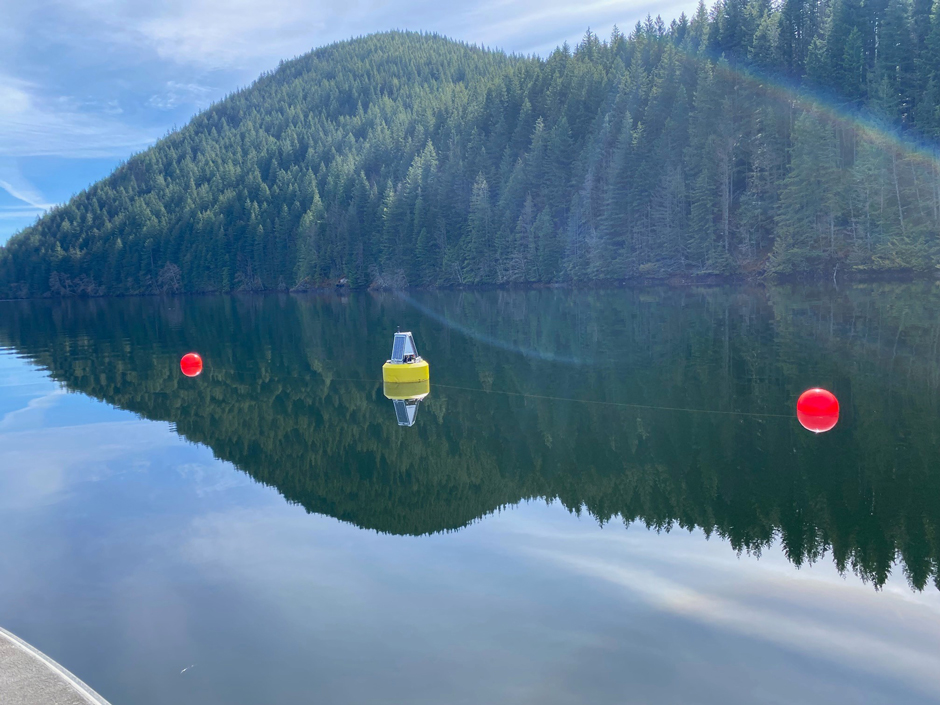
Data buoy in Chester Morse Lake. (Credit: Kevin Johnson / Seattle Public Utilities)
Jamie Thompson, a fisheries biologist at SPU, monitors aquatic ecosystems centered on fish listed under the U.S. Endangered Species Act (ESA).
After working as a fisheries technician, Thompson became interested in stream ecosystems and salmonids, including bull trout, which are the most temperature-sensitive salmonid species in the Pacific Northwest.
This interest led him to get undergraduate and graduate degrees from the School of Aquatic and Fishery Sciences at the University of Washington. Much of Thompson’s work is supported through the City of Seattle’s 50-year Habitat Conservation Plan for the Cedar River Municipal Watershed.
Reservoir Resources in Seattle, Washington
The Cedar River Municipal Watershed comprises Chester Morse Lake and Masonry Pool reservoirs, where most of the city’s water is stored.
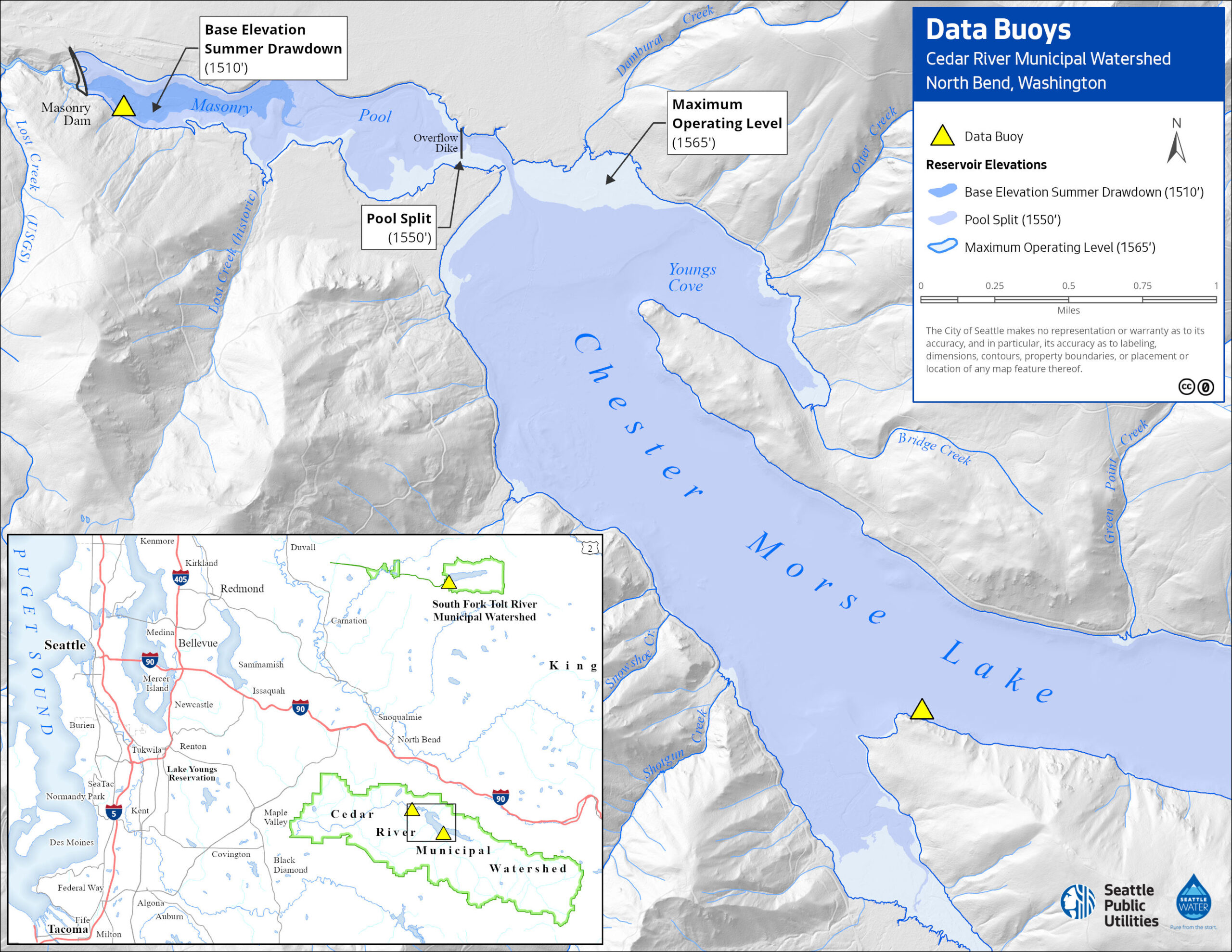
Map of the upper Cedar River Municipal Watershed, WA. (Credit: Nathan Schilling / Seattle Public Utilities)
Masonry Dam is about 1.25 miles downstream of Chester Morse Lake. Between Chester Morse Lake and Masonry Dam is a secondary reservoir called Masonry Pool. Masonry Pool and Chester Morse Lake are divided by a smaller, lower-head dam called the Overflow Dike.
During late summer months, the Overflow Dike allows greater water retention control in Chester Morse Lake upstream, while enabling drawdown of Masonry Pool downstream to avoid unnecessary water supply losses from the combined reservoir system due to moraine seepage.
To accomplish this, water operators conduct what is called “pool-split”, where they hold a minimum water level in Chester Morse Lake at the Overflow Dike (1,550 feet, City of Seattle datum) while drawing down Masonry Pool. Once Masonry Pool is drawn down, less water is lost through moraine seepage, yet minimum instream flows are still provided to downstream habitats.
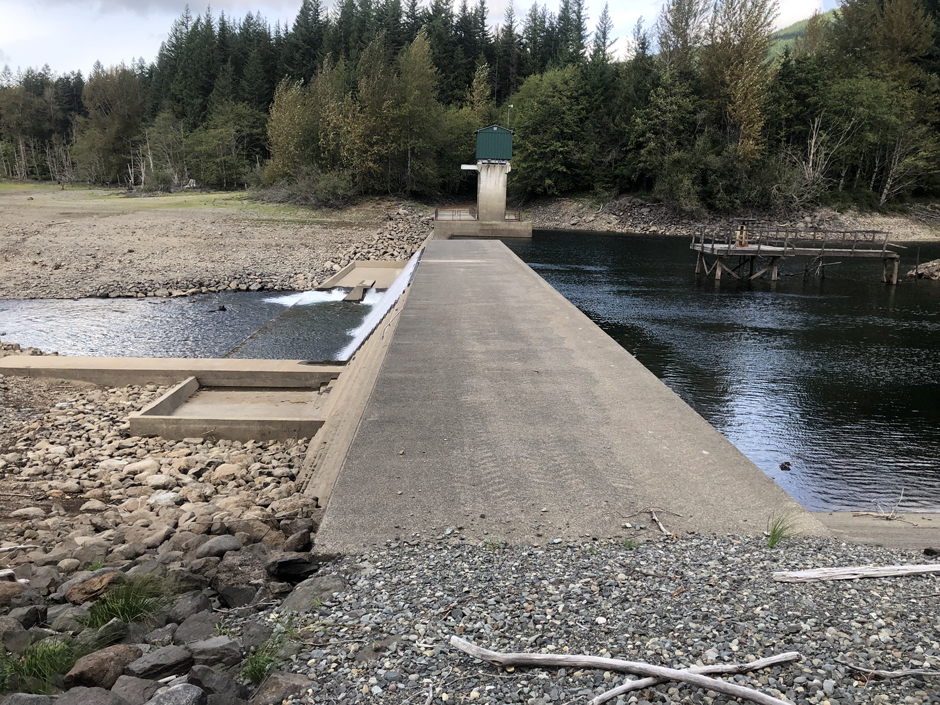
Masonry Pool (left) downstream of the Overflow Dike and Chester Morse Lake (right) upstream of the Overflow Dike during pool-split. In this photo, Masonry Pool is at base elevation of approximately 1,520 feet and Chester Morse Lake is at approximately 1,545 feet (both City of Seattle datum). (Credit: Jamie Thompson / Seattle Public Utilities)
Fish passage, however, was not built into the Overflow Dike, and Masonry Pool is relatively isothermic, meaning it does not thermally stratify and does not provide deeper, cooler, hypolimnetic water refuge for bull trout in summer months. Temperature-sensitive fish, such as bull trout, could become isolated in homogenously warm Masonry Pool during drawdown, potentially causing the fish thermal stress if they’re present.
The CB-250 buoys allow SPU biologists to monitor thermal stratification in the context of pool-split timing to determine the likelihood that bull trout would be present before the pools are split and Masonry Pool is drawn down.
Pool-split occurring earlier in summer, when temperatures are cooler in Masonry Pool, may result in more bull trout presence. This scenario could signal a need to explore mitigation measures, such as relocating individuals trapped in Masonry Pool into Chester Morse Lake, which is strongly stratified and provides abundant deep, cool, hypolimnetic refuge.
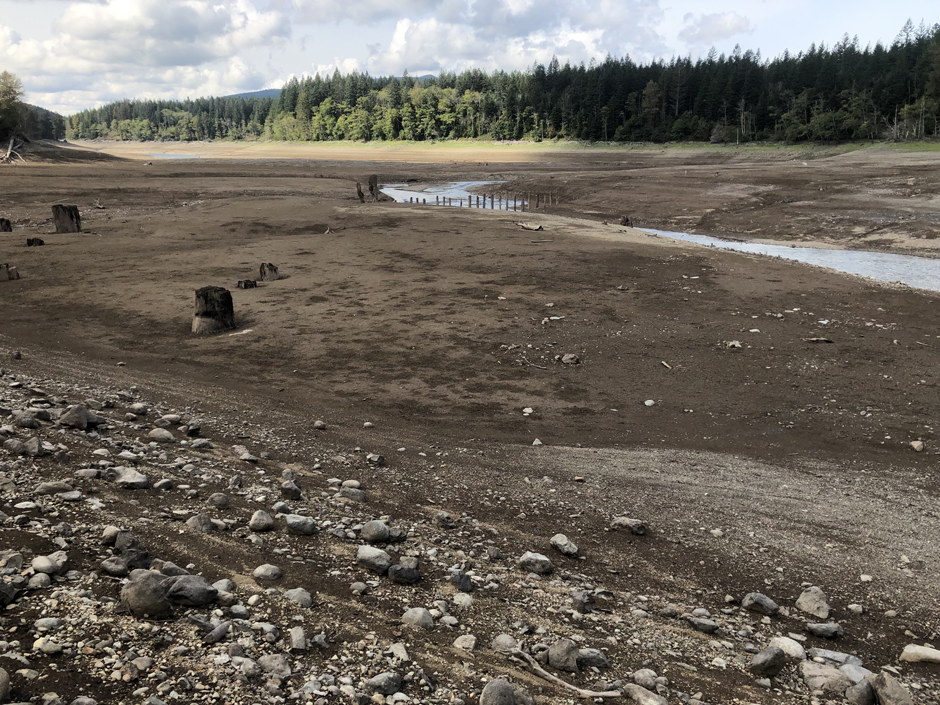
Masonry Pool looking downstream from the Overflow Dike at base summer drawdown level. (Credit: Jamie Thompson / Seattle Public Utilities)
Climate change could increase the potential for this scenario due to an expected regional transition from snow-rain to rain-dominated hydrology, translating to less snow melting sooner and causing pool-split to occur earlier in the year.
Monitoring Solutions in the Cedar River
SPU has added two NexSens CB-250 Data Buoys in the Cedar River Municipal Watershed. Chester Morse Lake’s data buoy is used to identify the onset of thermal stratification, while Masonry Pool’s buoy is used to determine real-time water temperatures in that reservoir.
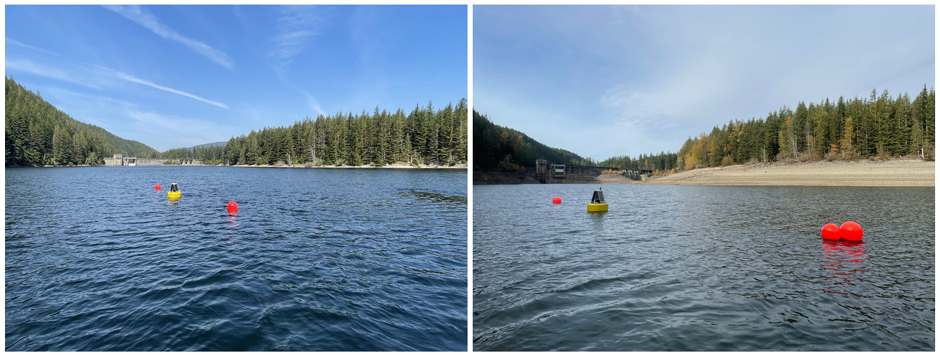
Data buoy in Masonry Pool at full pool level (Left) and during summer drawdown (Right). (Credit: Jamie Thompson.)
“Bull trout are the most temperature-sensitive salmonid in the Pacific Northwest, and so monitoring water temperature is a really important aspect of the work we do [to steward the watershed],” states Thompson.
The buoys provide water temperature data from different depths using the T-Node FR Thermistor String. Stainless steel chains allow each system to remain vertical at any elevation and prevent the chains from tangling as the reservoirs fluctuate by up to 90 feet.
“The buoys are less maintenance than the previous ones we’ve used,” explains Thompson, “While providing real-time data, which our previous buoys did not.”
A third buoy is also deployed in the South Fork Tolt River Watershed, which is used to inform water temperature management in downstream anadromous salmonid stream habitat.
The buoy monitors water temperature and dissolved oxygen levels and is equipped with a T-Node FR temperature string and an RDO-BLUE-UW dissolved oxygen (DO) sensor, which SPU can use to ensure water quality standards are being met.
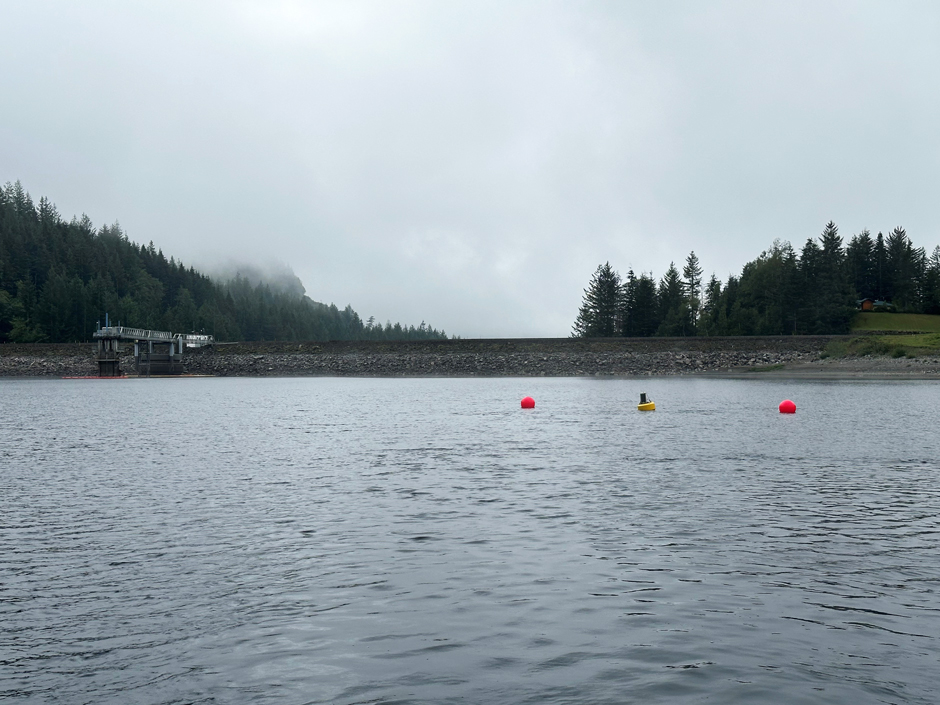
Data buoy in the South Fork Tolt Reservoir. (Credit Jamie Thompson / Seattle Public Utilities).
Conclusion
SPU biologists and water operators use the data they receive from the buoys to make informed decisions for the operation of a complex water supply system and potential impacts to several sensitive, ESA-listed fish species.
“I’m passionate about the interactions between humans and natural systems and strive to find ways we can coexist while avoiding undue harm,” explains Thompson.




0 comments